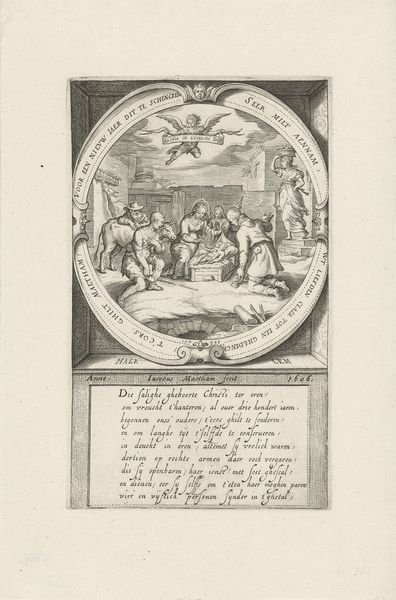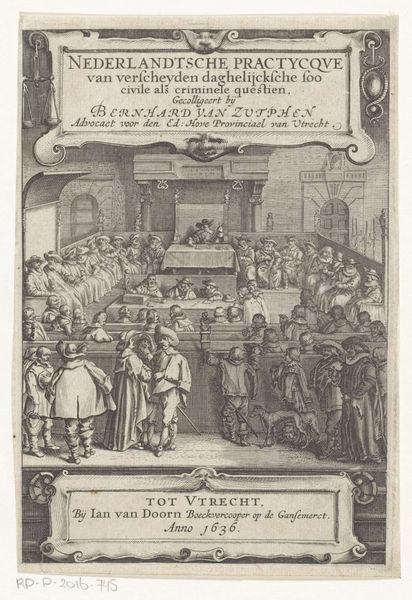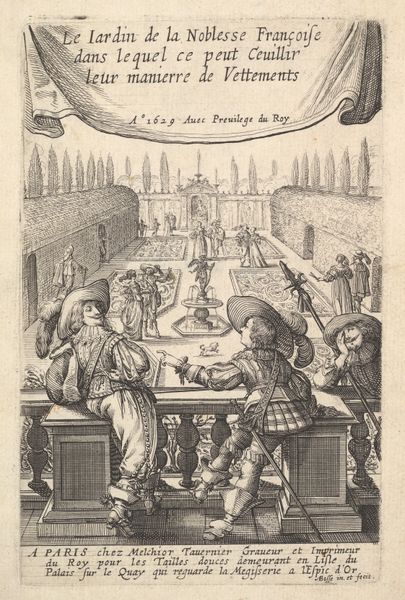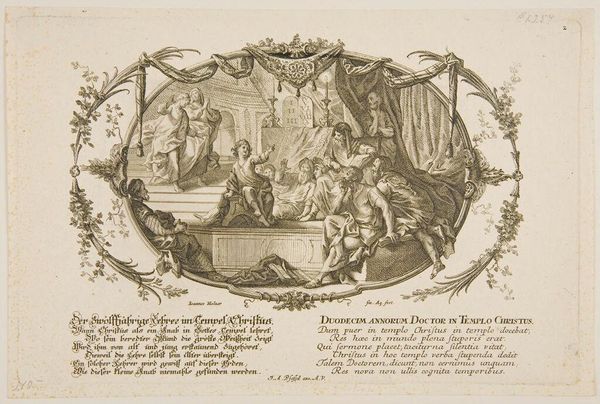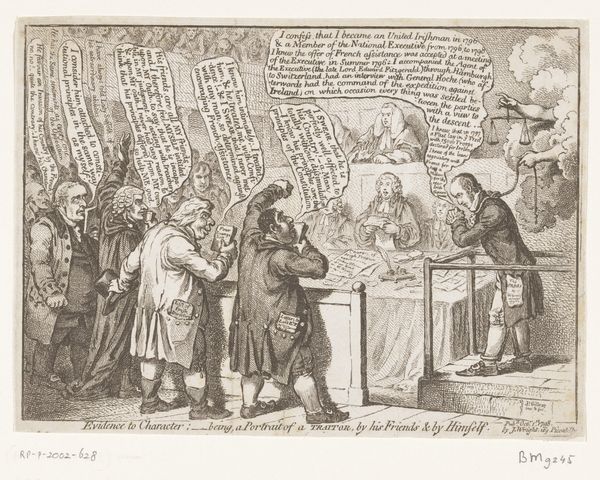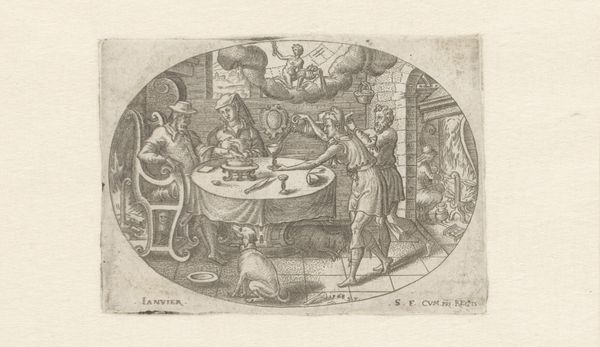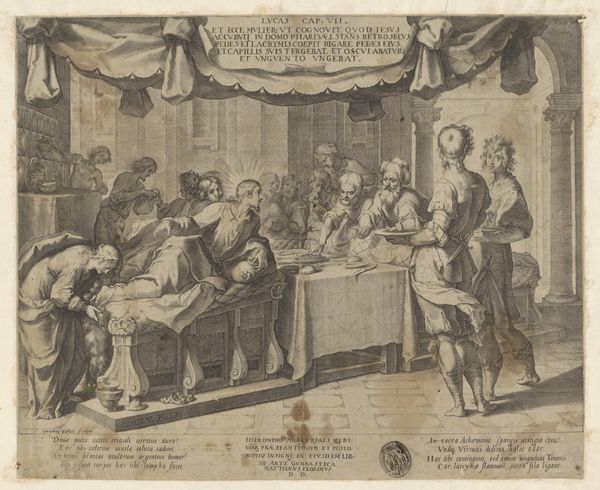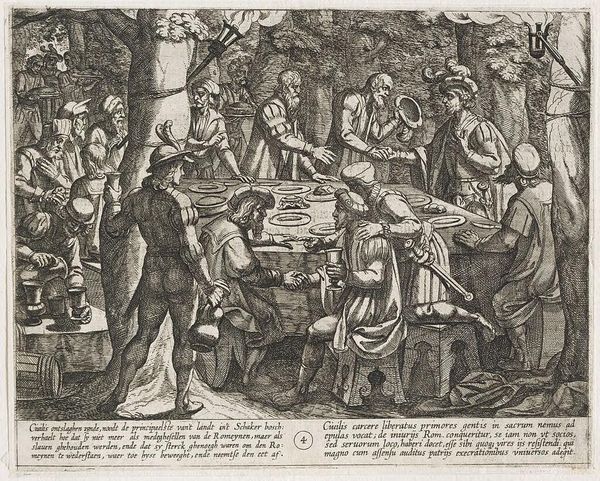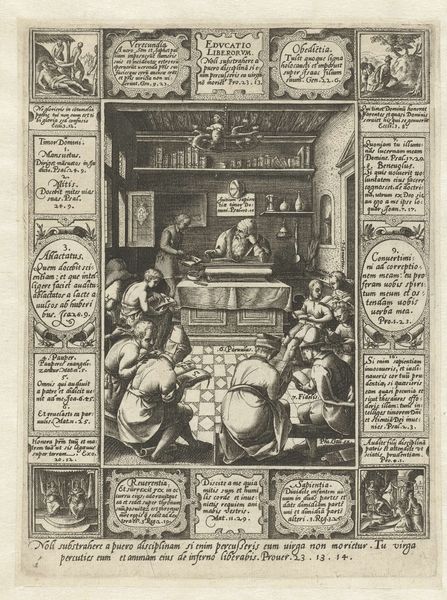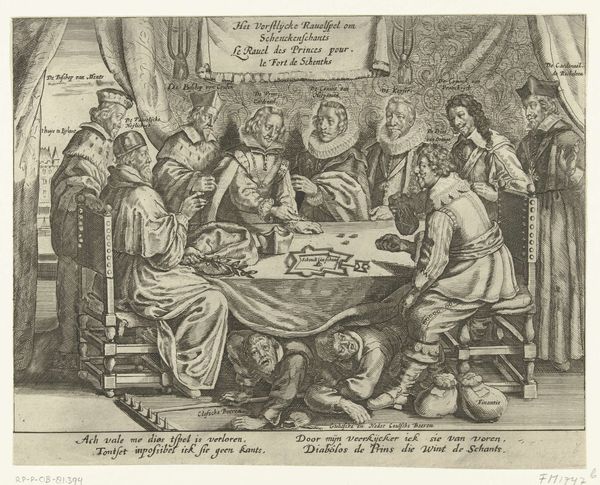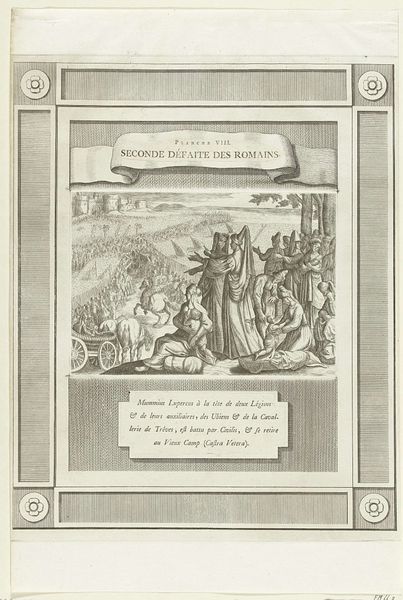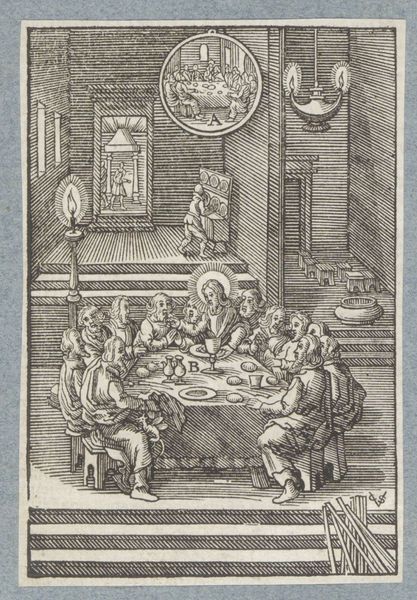
drawing, watercolor, ink, pen
#
drawing
#
aged paper
#
toned paper
#
narrative-art
#
landscape
#
figuration
#
personal sketchbook
#
watercolor
#
ink
#
pen and pencil
#
pen work
#
pen
#
watercolour illustration
#
storyboard and sketchbook work
#
northern-renaissance
#
sketchbook art
#
pencil art
#
watercolor
Dimensions: height 146 mm, width 129 mm, height 72 mm, width 127 mm
Copyright: Rijks Museum: Open Domain
Curator: Welcome. Here we have "Adoration of the Shepherds," a work created before 1606 by Jacob Matham, held here at the Rijksmuseum. It’s rendered in pen, ink, and watercolor on what appears to be toned paper. What strikes you first? Editor: It has an aged quality, almost like looking at a fragile document, storyboard or sketchbook art from centuries ago. The circular composition containing the adoration scene is juxtaposed with this text block beneath. I'm drawn to how those elements visually interact. Curator: That circular composition, almost a vignette, certainly dictates how we read the adoration scene. The artist masterfully uses line work to create depth and shadow. Notice how the figures are rendered with a precision that recalls the Northern Renaissance style. The tight grouping of figures and the subtle washes of watercolor—all are expertly composed. Editor: It's impossible to ignore the text. In addition to the "Gloria in Excelsis" banner held by angels, inscriptions border the upper and lower arcs of the central image. And that additional block of dense text below positions this drawing as something more than just a devotional image. Curator: Indeed. Matham presents a carefully structured scene framed by text—one invites scholarly interpretation using semiotics, focusing on the symbolic language within the piece itself. Editor: Yes, but the work's creation at the cusp of the seventeenth century situates it within the historical contexts of the Reformation and the rise of the Dutch Republic. The themes explored include spirituality, social structure, and cultural identity, prompting us to analyze how Matham addresses them visually. For instance, considering what class the shepherds belonged to during the period, and then depicting their role in one of the Bible's central events. Curator: True. But the effectiveness stems from his manipulation of form, regardless of subject. The linework captures light as a structural component and, beyond its narrative representation of a well-known episode, provides a kind of compositional cohesion. Editor: Absolutely; examining his choice to include aged paper also reflects an intentional connection to the history of devotional objects. These deliberate artistic decisions invite us to examine the intersections between artistic practice, religious belief, and social critique. Curator: So while we view and respond differently to its presentation of a religious narrative, our close looking reveals artistic mastery in his handling of line and color, while suggesting greater art historical themes at play. Editor: Ultimately, this work sparks critical dialogue about how art from the past continues to engage with present concerns. It seems these are dialogues worth further exploring.
Comments
No comments
Be the first to comment and join the conversation on the ultimate creative platform.
